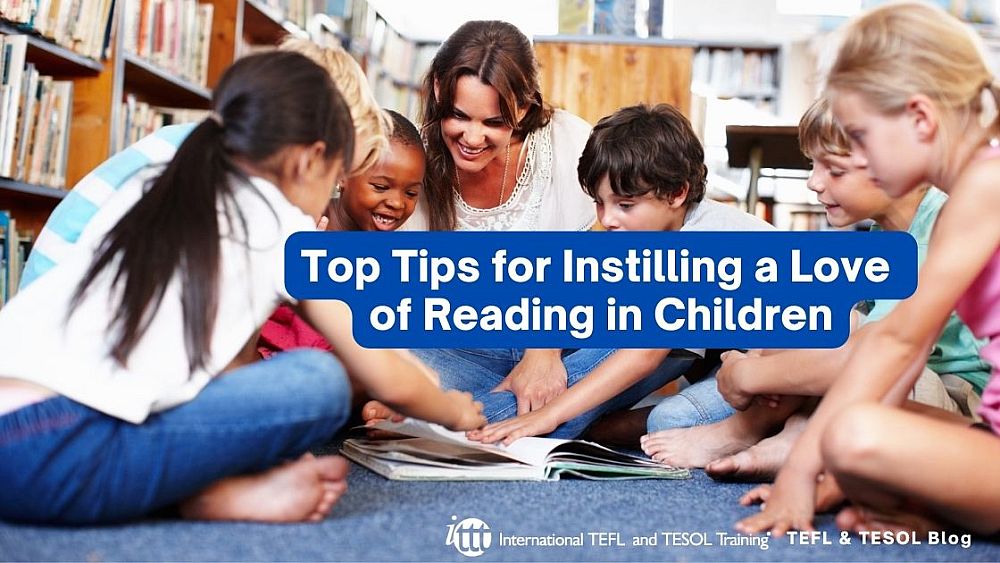Top Tips for Instilling a Love of Reading in Children

Reading is one of the most essential parts of learning a language as it not only facilitates language development but also enhances abstract skills such as visualization and imagination. For young learners and children, reading plays a vital role, as their vivid imagination intensifies the reading experience. However, their short attention spans can pose challenges in maintaining engagement with written material. So, how can we instill a genuine love of reading in children without relying solely on authority figures?
Table of Contents
Empowering Children to Take the Initiative
The Vast Array of English Language Literature
Identifying and Utilizing Individual Interests
Utilizing the Internet for Accessible Reading Materials
Encouraging Independent Exploration and Curiosity
Are you ready to teach English as a foreign language?
Check out what our course grads say in our many video testimonials!
Disclaimer: The views and opinions expressed in this blog post are solely those of the author, an alumni of ITTT (International TEFL and TESOL Training). They do not necessarily reflect the views or opinions of ITTT. The content provided in this post is for informational purposes only and should not be considered as official endorsement or representation by ITTT.
Empowering Children to Take the Initiative
When teachers become the driving force behind reading, there is a risk of children developing a reactionary distaste for it, stemming from their natural frustration with authority. To foster a true love of reading, it is crucial for children to take the initiative themselves. The key lies in the resources teachers provide to encourage independent exploration.
The Vast Array of English Language Literature
Teachers have a powerful tool at their disposal: the vast array of English language literature. While not all literature is suitable for children, there is something available for virtually every area of interest. An effective approach to cultivating a broader appreciation for reading is by incorporating graphic novels and comic books. Though not considered traditional pillars of literature, these reading materials captivate young learners with their engaging subject matter and corresponding artwork. Building upon a child's interest in comics can gradually expand their reading interests to other genres, bridging the gap from assigned literature to independent reading.
Identifying and Utilizing Individual Interests
Additionally, teachers can identify each child's specific interests and ensure the classroom is equipped with age-appropriate reading materials related to those topics. By tapping into a child's external interests, teachers can introduce reading materials that hold their attention and provide motivation for continued engagement. For example, a child fascinated by airplanes may be more inclined to read literature centered around aviation, while simultaneously developing fundamental reading skills comparable to a child interested in animals or any other subject.
Utilizing the Internet for Accessible Reading Materials
The cost of securing reading materials can be a limiting factor in this child-driven learning theory. However, with the advent of the internet, compiling basic physical reading material on various subjects has become easier than ever. By determining a child's interest, locating level-appropriate online resources, and printing them as needed, teachers can provide literature tailored to their students' interests. While these materials may not be of the highest quality, catering to individual interests undoubtedly paves the way for a more enthusiastic embrace of reading compared to mandatory literature that fails to captivate their personal curiosity.
Encouraging Independent Exploration and Curiosity
In conclusion, reading is an essential component of language development. However, when children's interaction with reading is limited to uninspiring materials enforced by authority figures, it can lead to negative associations. To overcome this, teachers should focus on providing reading resources catered to each child's interests. By adopting this approach, teachers can empower children to explore reading independently, sidestepping the authoritarian connotation and fostering genuine appreciation and love for reading as it blossoms within each child.
Are you ready to teach English as a foreign language?
Apply now & get certified to teach english abroad!
Speak with an ITTT advisor today to put together your personal plan for teaching English abroad!
Send us an email or call us toll-free at 1-800-490-0531 to speak with an ITTT advisor today.
Related Articles:
- Top 10 Cities in Europe with the Highest Demand for English Language Teachers
- 5 Reasons To Take A TEFL Course Right Now - Even If You Are Not Leaving Yet | ITTT | TEFL Blog
- All the Documents You Will Need to Teach English Abroad
- The Impact of Positive Motivation on an ESL Classroom
- You're Never Too Old to Change Your Life and Do a TEFL Course | ITTT | TEFL Blog
- Getting Student Placement Right - The Best Desk Arrangements for EFL Students



